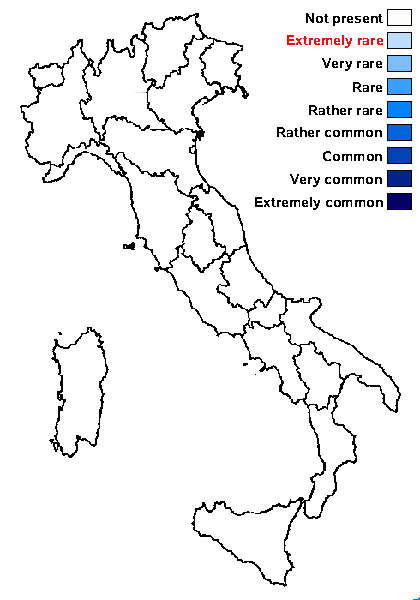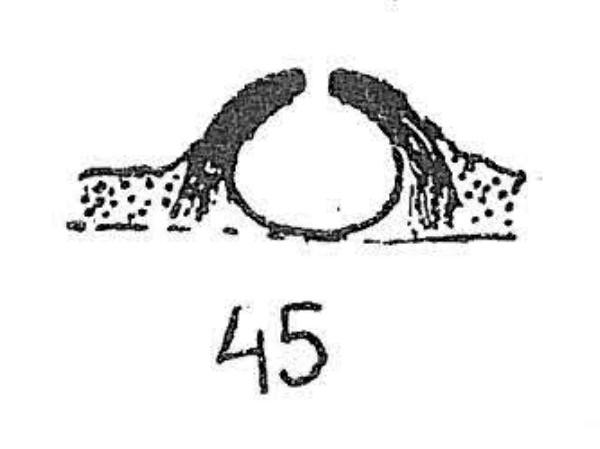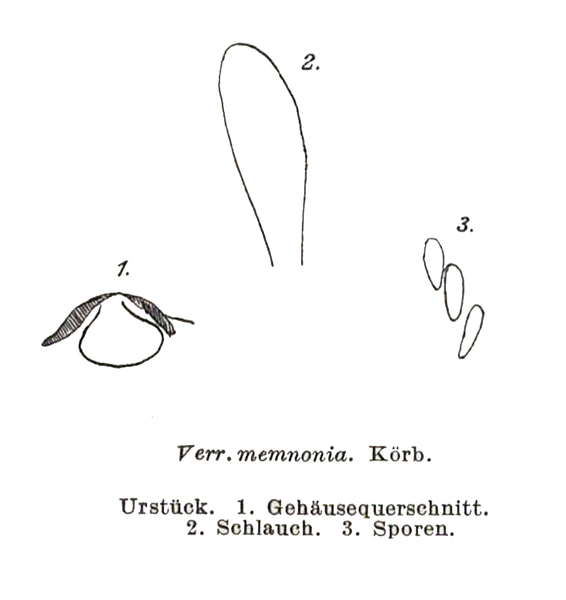Verrucaria memnonia (Flot.) Arnold
Flora, Regensburg, 44: 535, 1861. Basionym: Verrucaria maura var. memnonia Flot. - in Körb., Syst. Lich. Germ.: 340, 1855
Synonyms:
Distribution:
Description: Thallus crustose, thinly episubstratic, dark brown to brown-black, granulose-areolate to continuous and film-like, consisting of small, poorly delimited, scattered to confluent flecks that become subgelatinous when wet. Cortex absent, the thallus appearing (sub-)paraplectenchymatous throughout, with a poorly organized algal layer inspersed with substrate particles. Perithecia brown-black, up to 300 per cm2, hemispherically projecting, the apical part up to 0.2 mm wide. Involucrellum adpressed to exciple or slightly diverging in lower part, reaching to base-level, c. 40 μm thick in upper part, c. 25 μm thick at base; exciple up to 0.15 mm wide, the wall colourless to thinly brownish in outer part, 15-20 μm thick; hamathecium of simple, 15-20 μm long periphyses and periphysoids, interascal filaments absent; hymenial gel hemiamyloid, I+ red (I+ blue at very low concentrations of I), K/I+ blue. Asci 8-spored, clavate, I-, fissitunicate, the wall thickened above, with an ocular chamber, dehiscent by extrusion of an endotunica to form a delicate rostrum, Verrucaria-type. Ascospores 1-celled, hyaline, ellipsoid, 13-16 x 5-7 μm. Photobiont chlorococcoid. Spot tests: K-, C-, KC-, P-, UV-. Chemistry: without lichen substances.
Note: mostly on hard siliceous rocks in the shade of montane coniferous forests; widespread in the European mountains, with a few scattered records from the Alps outside Italian territory; to be looked for in Italy.
Growth form: Crustose
Substrata: rocks
Photobiont: green algae other than Trentepohlia
Reproductive strategy: mainly sexual

Predictive model
Growth form: Crustose
Substrata: rocks
Photobiont: green algae other than Trentepohlia
Reproductive strategy: mainly sexual

Predictive model
 INDEX FUNGORUM
INDEX FUNGORUM
 GBIF
GBIF



